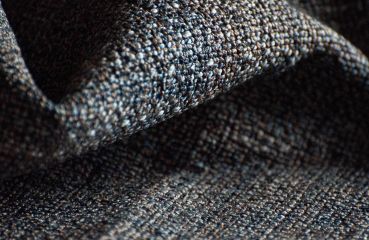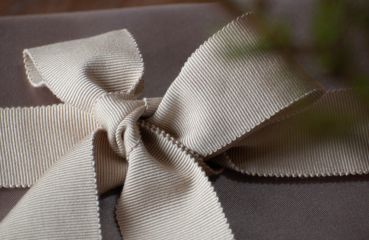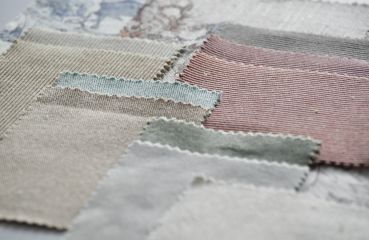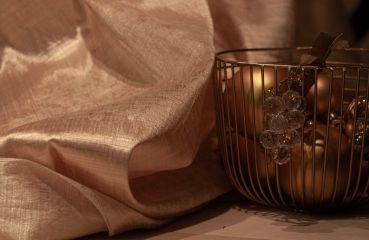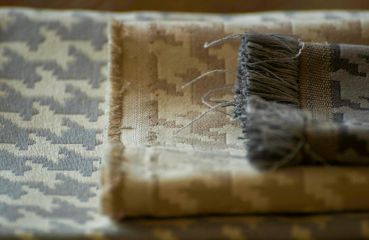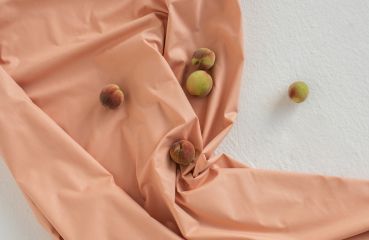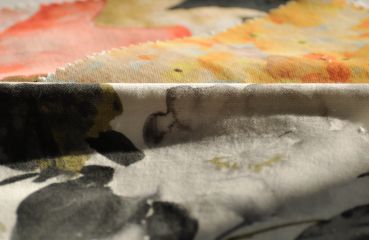ABOUT THE BEAUTIFUL ART OF FABRIC GIFT WRAPPING
Where does it come from?
The word furoshiki is inseparably associated with Japan and its culture. For hundreds of years, these picturesque pieces of cloth have accompanied the Japanese in various aspects of everyday life. Their functionality has evolved over the centuries: they were widely used to store personal items, when moving home, and as part of the bride's dowry. Currently, they are a symbol of the Japanese tradition and are still commonly used. Furoshiki was probably used as early as the 8th century AD, but it gained its present meaning and name only ten centuries later. The name derives from the fabric used in public baths (sentō) to wrap wet towels and clothes of the bathers (the word furo means bath, and shiki – to spread).. Before furoshiki was first used in baths, it was known as hirazutsumi – a flat wrapping cloth.
Furoshiki is a bundle made of fabric of various sizes. It is traditionally used in Japan for wrapping, packing, and carrying various types of items. There is not a single standard size for furoshiki – you may come across hand-sized as well as bed-sheet-sized pieces of cloth. The most common dimensions are 45 cm squares and 68 x 72 cm rectangles.
Furoshiki can be made of various types of fabrics, such as silk, crepe, cotton, viscose, and polyester. It can be plain, display a traditional pattern, or be dyed using the shibori technique (see our blog post “The magical world of shibori”).
Back to the origins
Furoshiki is still used in Japan. Today, in its original version, the cloth is most often used to wrap lunch boxes (bento) and as a table mat during the lunch break.
This quaint and extremely impressive custom is also slowly gaining a foothold in our culture as part of broadly understood food design. It can be used to pack lunch for school or work, or snacks for a picnic. After unfolding, the furoshiki can serve as a beautiful placemat.
Apart from its decorative aspect, the fabric has an insulating and warmth-keeping function, so it can provide an excellent double protection.
For now, however, furoshiki seems to be an increasingly common gift-wrapping technique all over the world. This increase in popularity, apart from the obvious interest in the Asian culture and its customs, also seems to be related to the eco-friendly trend and the search for new ways to eliminate plastic and gift bags etc. Environmental protection with the use of fabrics as a substitute for plastic packaging is a brilliant solution.
In our culture, this choice is additionally motivated by purely aesthetic reasons. Even the tiniest thing wrapped in fanciful and decorative cloth gains value and provides the recipient with proof of the giver’s dedication and attention.
Christmas is a special time of the year when we want our smallest gestures to become extraordinary, magical, and festive. We make gifts whose packaging is as important as the content.
Furoshiki seems to be a perfect solution for all those who appreciate and enjoy beautiful items, and want to celebrate pleasant moments and small gestures.
A small piece of cloth is enough – a square or a rectangle, pliable and not too thick. Fine noble silk, arranged in flexible lines, shimmering and glistening with several colours, will do best. Other suitable choices include fine and flexible cotton, and taffeta or calico, with their parchment-resembling structure. Each of these fabrics will endow your intricate furoshiki bundles with different, unique effects.
Fabric gift wrappings are not only beautiful, but also very practical. Simple furoshiki bundles can be used to make a bag or beautiful packaging for even a shapeless item which would be difficult to wrap in any other way. Furoshiki can be additionally embellished with a blade of dry grass or a flower, a sprig of holly or juniper tucked into the knot. The end result depends only on the imagination and creativity of the giver.
Folding furoshiki involves hand movements, allowing for a very tactile contact with the fabric. It requires precision, smoothing, and intricate, patient wrapping and finishing. By offering someone a gift wrapped in furoshiki, we show them our special respect, kindness, and attention.
Fabrics from the Dekoma collection used in the session:
Hand-woven silk shantung, available in a variety of dazzling colours. Very posh and sophisticated, this is a truly unique silk material, with two-coloured yarn and remarkable colours and texture. It has relatively low sun resistance, so take that into consideration when designing your decorations. Lining (preferably black-out) is a must. Due to the fact that it is a natural fabric, there might be differences in colour, both between batches of the fabric and within a single bolt.
TRITON
Decorative dim-out collection. Delicate shine and softness make Harold a perfect solution for window decoration, curtains or Roman blinds. Innovative technology and attractive, sophisticated colours endowed the pattern with a modern, intriguing character. 300 cm width makes it an affordable choice. The fabric is safe to human health as confirmed by the OEKO-TEX® Standard 100 certificate. It requires delicate hand-washing in cold water (30°C) Recommended for modern-style, household and public interiors (restaurants, hotels).
The Pictor collection features bold decorative and furniture fabrics with technical parameters making them ideal for upholstering home furniture. Printed designs in three colours on a white background are inspired by natural textures. The products in the collection can be mixed and matched. They will work great in all interiors decorated in Scandinavian, vintage, modern and minimalist styles.
Photo-session for Dekoma.
Photographs, content, and text: MBBM Studio.





















